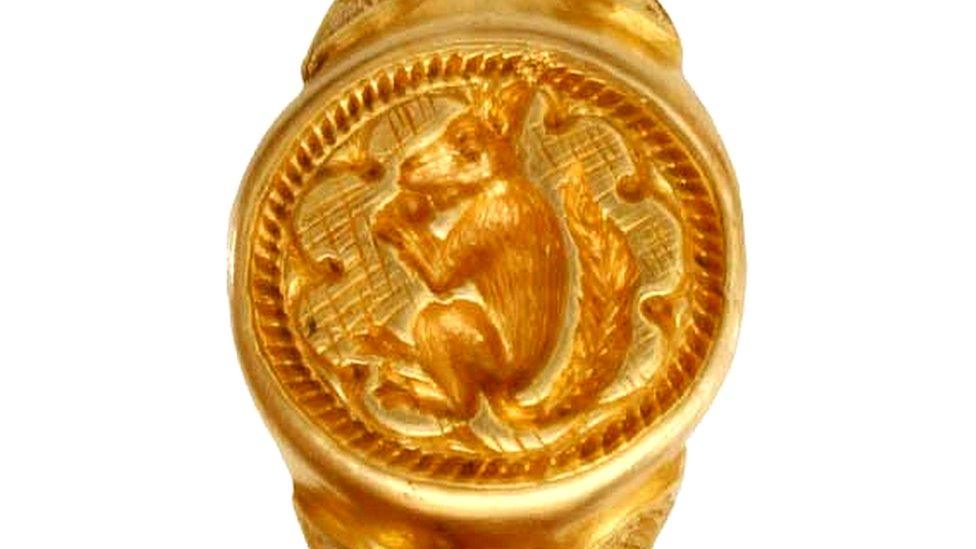17th Century Norfolk woman's ring is detectorist's 'favourite find'
- Published
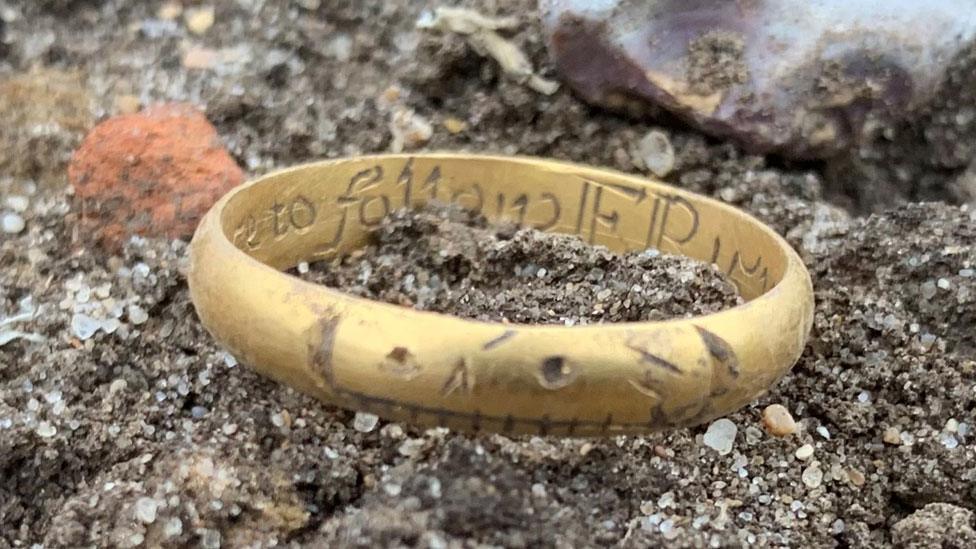
Roger Kent discovered the ring in a "pretty remote place" just as the light was fading on 6 September 2022
A gold ring linked to a 17th Century woman is "my favourite find", a metal detectorist has said.
It was unearthed by Roger Kent, 60, in a field he regularly searches near Long Stratton, south of Norwich.
He used the initials and date engraved within to trace it to Elizabeth Roope, who lived at nearby Morningthorpe and died on 15 November 1680.
The find, which has been declared treasure by a coroner, is a mourning ring, made to mark her death.

Using the engraving "Prepare to Follow ER 15 no 80", he traced it to a 17th Century woman who lived a couple of miles away
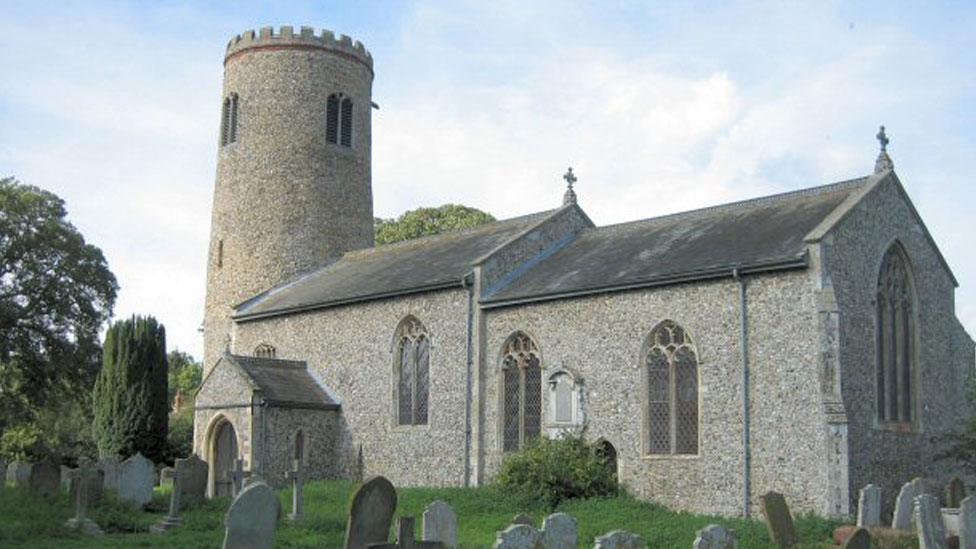
Elizabeth Roope lived at Morningthorpe Hall and was buried at the parish church after dying on 15 November 1680
The retired illustrator, who has been metal detecting since childhood, made the discovery in September 2022.
"I'd gone over this field several times over the years and that year it'd been turned over and it popped out, just as it was getting dark and I was going home," he said.
The 21.7mm (0.8in)-diameter ring was engraved "Prepare to Follow ER 15 no 80", suggesting the person remembered had the initials ER and died on 15 November 1680.
Mr Kent said: "I put a random search in for ER and that exact date and it came up with Elizabeth Roope, buried at Morningthorpe on the right date less than a couple of miles away, and with so few people able to afford gold rings, it's likely to be her."
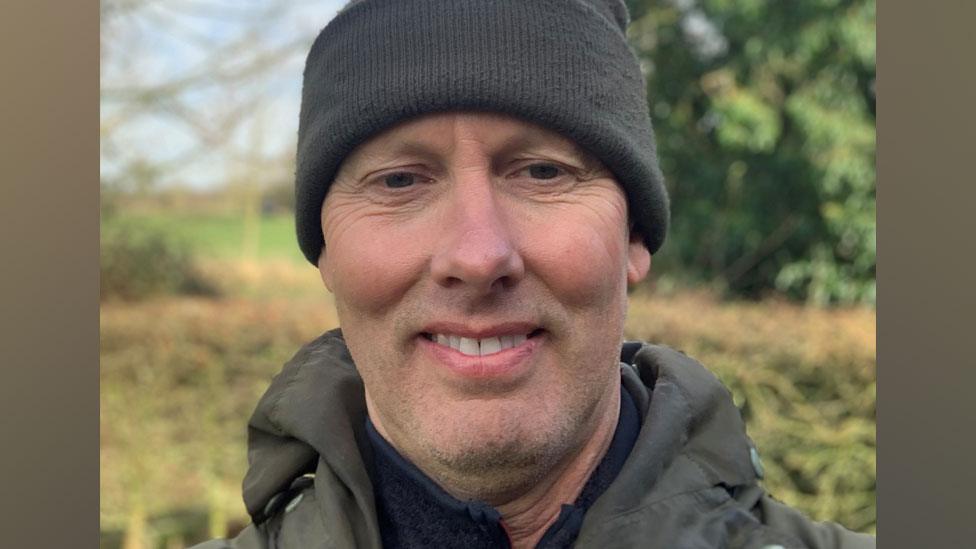
Roger Kent is a keen local history buff who was delighted to trace one of his finds to a named Norfolk woman
Her husband John Roope, of Morningthorpe Hall, external, has a memorial in St John the Baptist Church in the village, although Mr Kent was unable to find Elizabeth's tombstone.
Mourning rings became popular amongst better-off people in the 17th Century, especially after Charles II's Restoration, according to Norfolk finds liaison officer Helen Geake.
People would leave money in their wills for rings to be created and distributed to family and friends in their memory.
"For example, the diarist John Evelyn distributed 60 rings to his daughter's friends after her death - and the closer the friend, the better the ring," said Dr Geake.
"The likelihood this ring was in memory of anyone other than Elizabeth is quite small - it's nice to imagine it might have belonged to her husband."
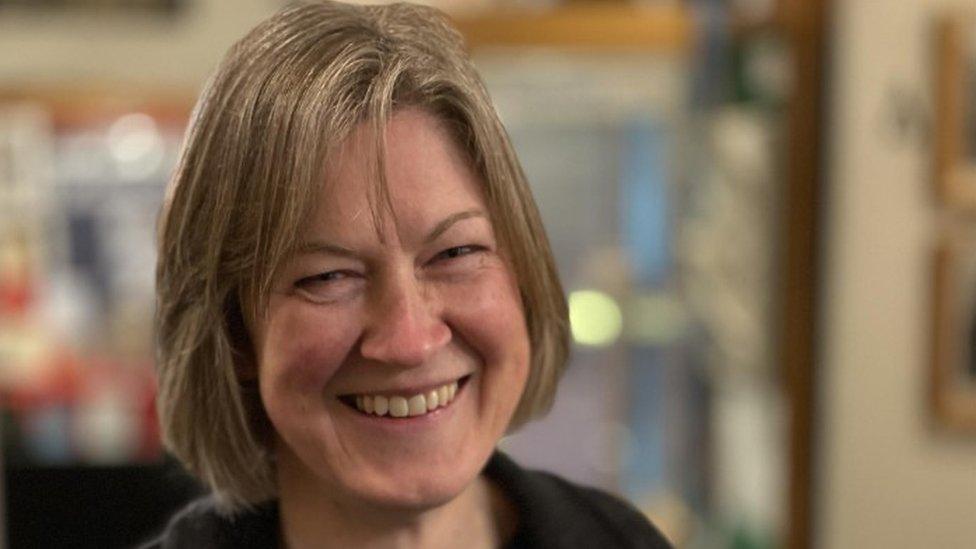
Historian Helen Geake said "it's much easier to assign mourning rings to a man as they are more often in the records"
Mr Kent has made many discoveries over the decades, but "this is the nicest because of the provenance".
"Finding a gold ring is pretty rare and it's my favourite find, as I love my local history," he said.
Norwich Castle Museum is hoping to acquire the ring.
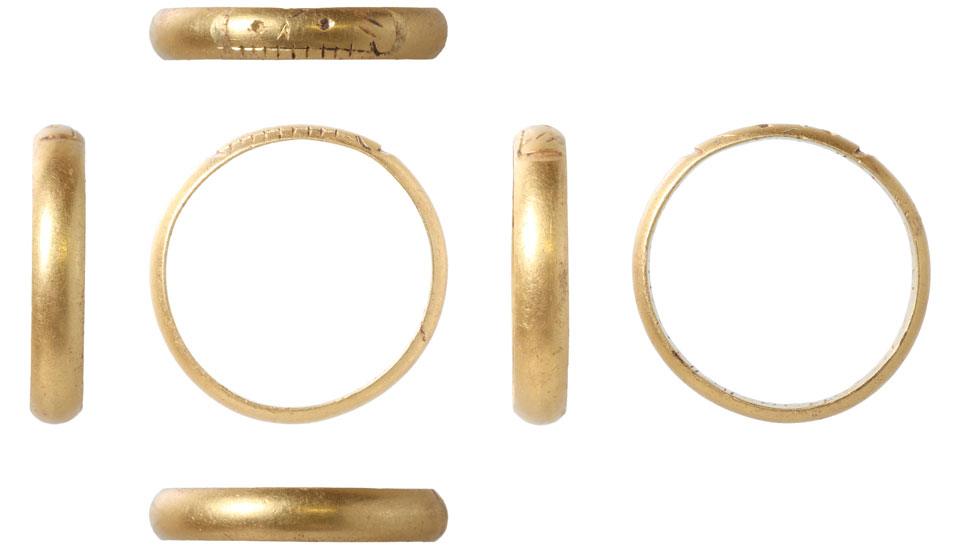
Its size suggests it was owned by a man, possibly her widower, who died five years after her

Follow East of England news on Facebook, external, Instagram, external and X, external. Got a story? Email eastofenglandnews@bbc.co.uk, external or WhatsApp 0800 169 1830
Related topics
- Published27 March 2023
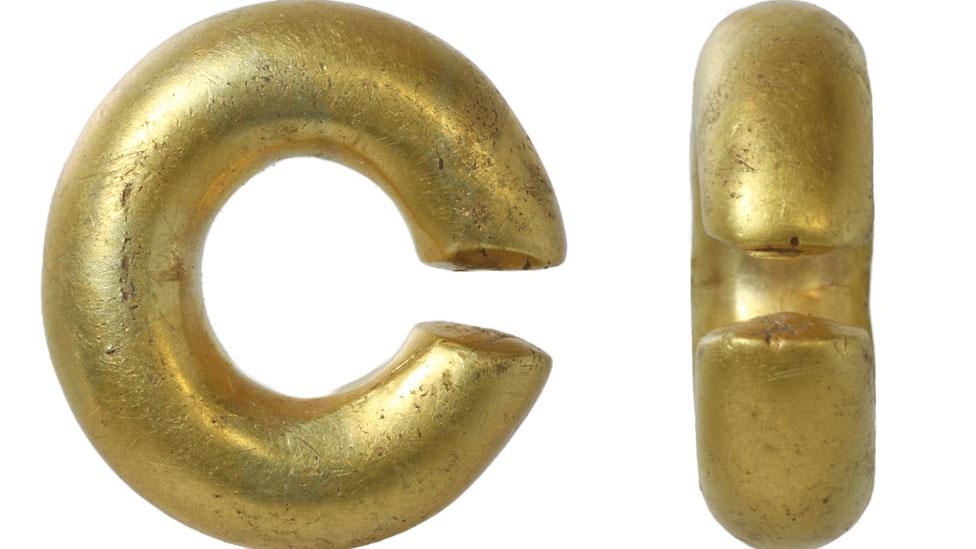
- Published14 January 2024
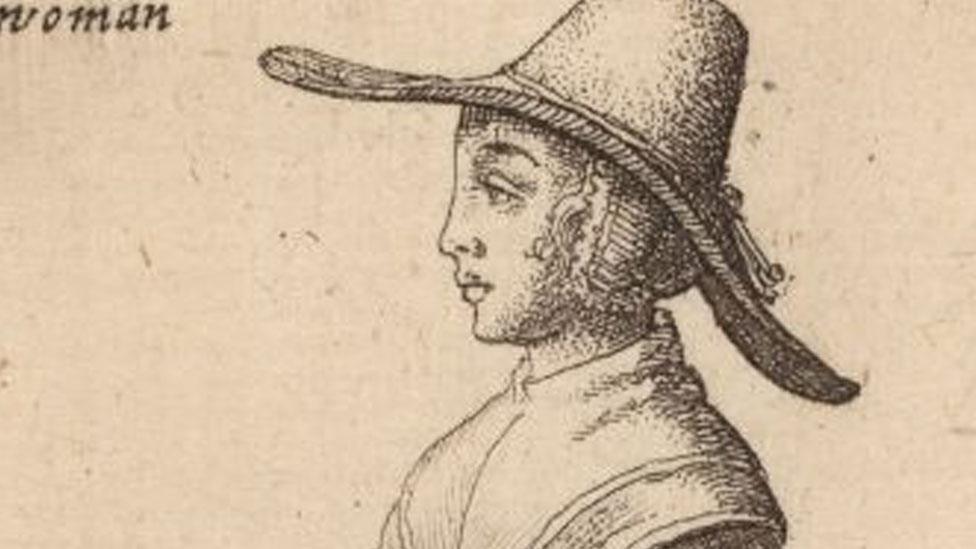
- Published23 September 2023
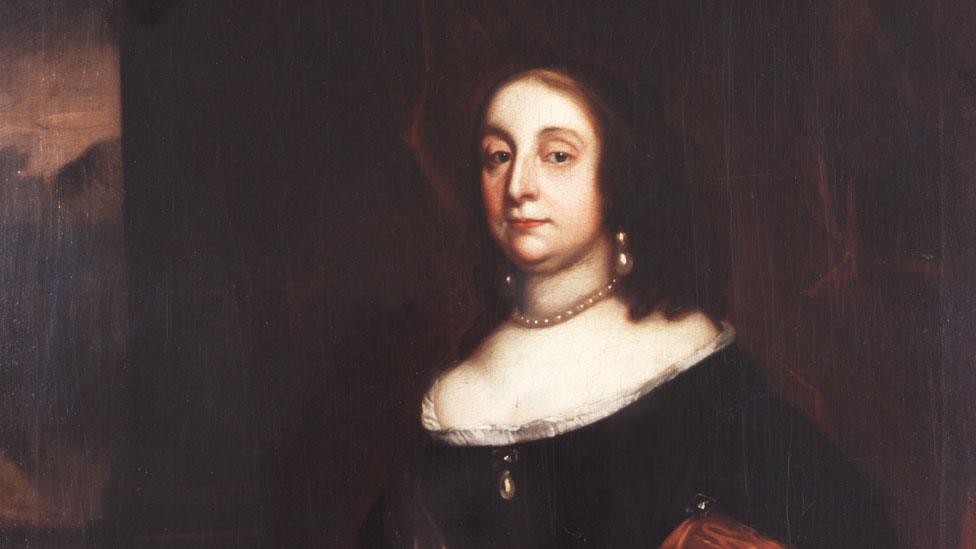
- Published20 September 2023
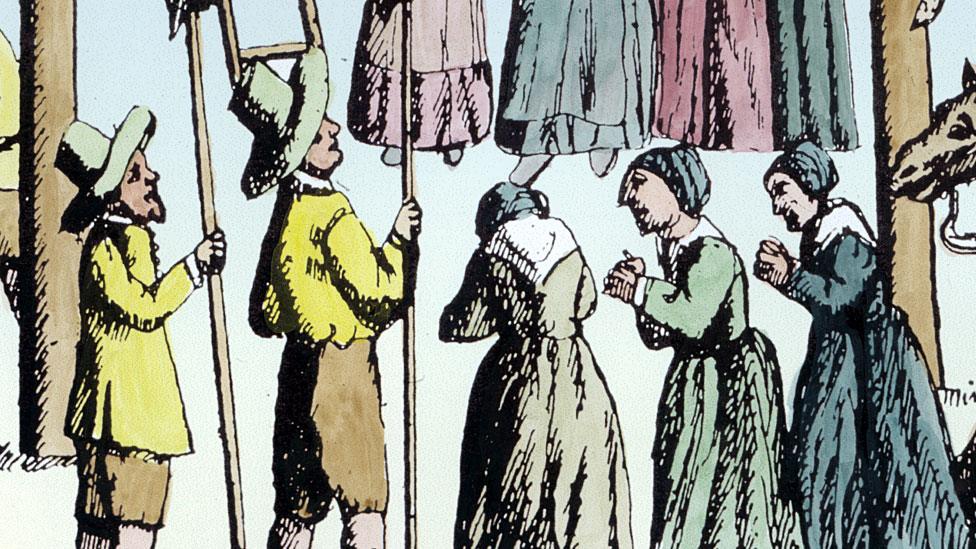
- Published3 June 2023
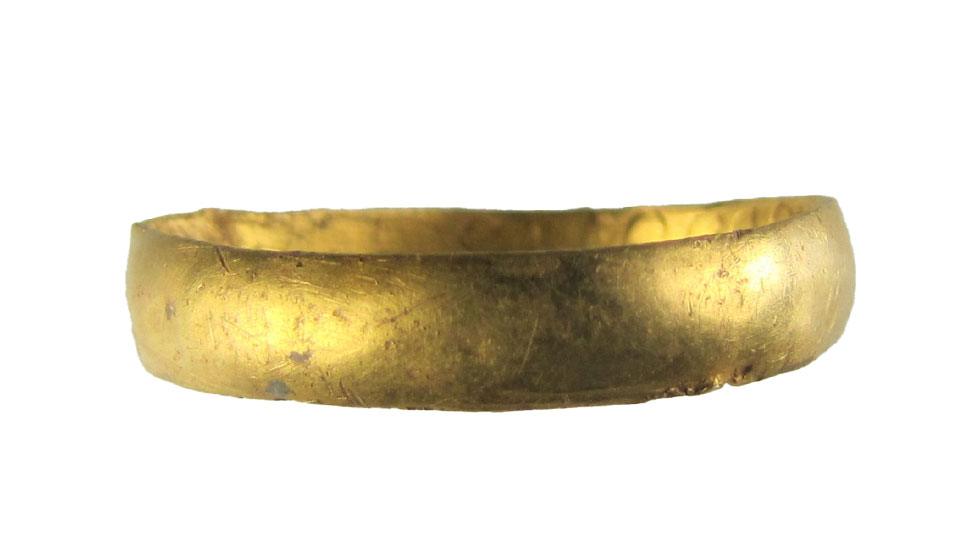
- Published28 December 2021
